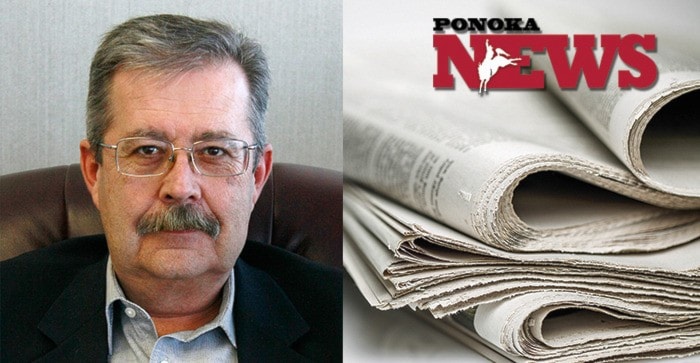A third round of changes are coming down the pipeline from the province related to the Municipal Government Act (MGA).
Announced last week was Bill 8, an Act to Strengthen Municipal Government, which brings to the forefront the need for governance, collaboration between municipalities (with a focus on First Nations) and funding. For Ponoka County the one major difference is the tax ratio between commercial and residential assessments.
This was presented last year by Municipal Affairs, which proposes tax ratios be on a 5-1 ratio from the highest non-residential property tax rate to the lowest residential property tax rate. CAO Charlie Cutforth says Ponoka County sits at just over 6-1.
“It’s about a 20 per cent increase in residential tax to make it a 5-1 ratio,” said Cutforth.
He added that for a home assessed at $1,450 per year, about $870 (60 per cent) goes to the Education Property Tax requisition, which goes to Alberta Education.
The rest, about $580 goes to Ponoka County. If the county did increase its property tax by 20 per cent that would be an additional $116 of the $580. Cutforth says that a change may need to be looked at.
In a worst case scenario, if the county did have to ensure a 5-1 property tax ratio, Cutforth suggests that could be a slight drop in commercial and a slight increase in residential. This new amendment from the province proposes allowing the minister to set a timeline for completion.
Cutforth takes issue with the education requisition, which forces municipalities (counties and towns) to pay taxes for schools while still being told where they are allowed to get funding. On top of that a municipality must make the payments to the requisition regardless if the money was paid.
For Ponoka County that’s quarterly payments of about $2 million. By the end of June, “We have to come up with $4 million before we collect it.”
And when it comes to assessments the county handles the assessor costs for properties while the province charges for linear (oil and gas) assessments. The province gains the information from these assessments but the municipalities pay for the work, explained Cutforth.
He suggests the system is in desperate need of fixing and legislating a 5-1 ratio isn’t the way to do it. “That’s just throwing a dart and hitting five.”
There are inequities from one municipality to another in how they assess non-residential and residential property taxes, explained Cutforth, which is one reason to make some fixes. He added that commercial agricultural and industrial property taxes are also out of balance.
As an example, a dairy production with millions of dollars in building improvements may only have to pay several hundred dollars in taxes while a commercial property with the same improvements would have to pay tens of thousands.
The next grouping of draft regulations to the MGA are expected later this year.
